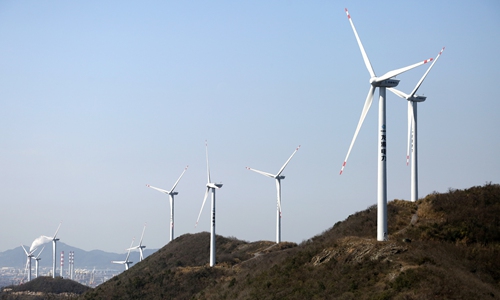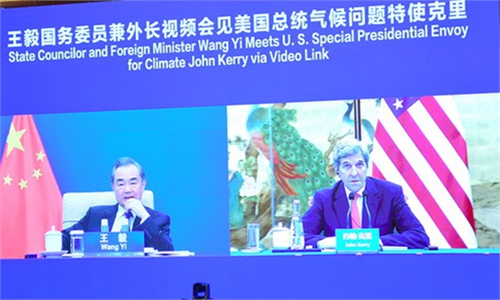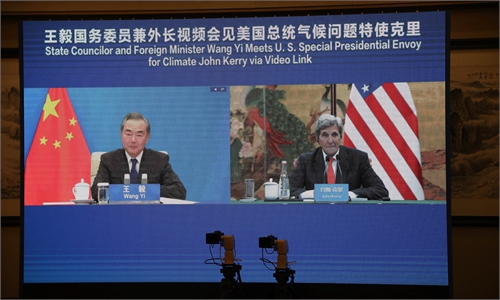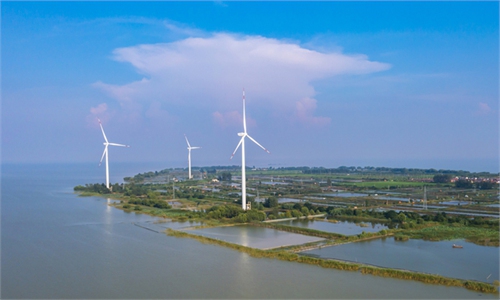China to put carbon emission goals into medium- and long-term development strategy: climate envoy Xie Zhenhua

17 turbines generate electricity at the Jintangfeng wind farm in Zhoushan, East China’s Zhejiang Province. File Photo: cnsphoto
China will put its carbon emissions peak and carbon neutrality goals into the country's medium- and long-term development plans to further fulfill the promises made to strengthen global climate cooperation, announced China's climate envoy Xie Zhenhua during the Beautiful China Forum 100 held in Beijing on Saturday.
Xie mentioned that a special working group has been established to design a policy system targeting carbon emission reductions.
The system will firstly coordinate carbon emission reductions with security issues in multiple sectors, like energy, food, industry and supply chain, and designate peak carbon emissions and carbon neutrality goals as the major strategy to form a new production and lifestyle system, said Xie at the forum.
The latest technologies will be applied to various phases of overall carbon emissions reduction strategies. Cutting-edge technologies, such as solar power batteries and hydrogen production from renewable energy, the development of intelligent power grid, advanced power storage system and carbon collection technologies, will be enhanced.
"China's strict carbon emissions reduction plan is definitely positive for the country's development, but it will be tough for some energy-intensive industries in the short term," Lin Boqiang, Director of the China Center for Energy Economics Research at Xiamen University, told the Global Times on Sunday.
Lin noted that China is planning to build the world's largest and most efficient green energy system in the coming decades, using green energy to replace fossil energy, which accounts for about 85 percent of China's total energy consumption. "It will benefit everyone after the transformation is complete but will be difficult for the industry because the cost of production will surge amid carbon emission caps," Lin said.
China's economic planner, the National Development and Reform Commission, vowed on September 7 to establish green power exchange pilot projects across the country to build bridges among green energy programs and enterprises to simplify the exchange process and reduce production costs.
Xie suggested that consumption of coal during the 14th Five-Year Plan (2021-25) will be strictly controlled and further reduced by the end of the 15th Five-Year Plan (2026-30).
Reduction of carbon emissions is a global issue and China already adopted measures and assumed its responsibility as the largest developing country. China's carbon dioxide emissions per unit of GDP in 2020 was down 48.4 percent from 2005, with an actual reduction of CO2 emissions of 5.79 billion tons, said Xie.
"China's large renewable power generation capacity and over 6 million of new-energy vehicles, which account for 33 and 50 percent of the global total respectively, and world-leading 5G technology, have built a solid basis for the country's electrification and energy transformation," said Xie.
US climate envoy John Kerry visited China from August 31 to September 3 and met with Xie in Tianjin to discus cooperation on climate change between China and the US and the upcoming 26th UN Climate Change Conference of the Parties (COP26).
Wang Yi, China's State Councilor and Foreign Minister, said in the meeting with Kerry via video link that climate change cooperation cannot be separated from general China-US ties. Wang also stressed that the US should meet China halfway and take positive actions to bring bilateral ties back to the right track.



